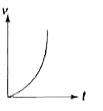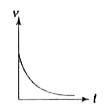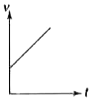A
B
C
D
Text Solution
Verified by Experts
The correct Answer is:
|
Topper's Solved these Questions
MOTION
MCGROW HILL PUBLICATION|Exercise HIGHER ORDER THINKING QUESTIONS|48 VideosView PlaylistMISCELLANEOUS QUESTIONS
MCGROW HILL PUBLICATION|Exercise PART-B|99 VideosView PlaylistREFLECTION OF LIGHT
MCGROW HILL PUBLICATION|Exercise HIGHER ORDER THINKING QUESTIONS|10 VideosView Playlist
Similar Questions
Explore conceptually related problems
Knowledge Check
Similar Questions
Explore conceptually related problems
MCGROW HILL PUBLICATION-MOTION-HIGHER ORDER THINKING QUESTIONS
- Tripling the speed of a motor car multiplies the distance required for...
Text Solution
|
Play - An insect craws a distance of 3m along north in 6 seconds and then a d...
Text Solution
|
Play - In which of the following velocity (v) - time (t) graphs, the instanta...
Text Solution
|
Playing Now - If x is the distance at which a car can be stopped when initially it w...
Text Solution
|
Play - When xpropt^(n), acceleration is constant when n equals
03:22
|
Play - Distance covered-time graph cannot be
Text Solution
|
Play - Area between the time-axis and v-t curve when added with proper algeb...
01:29
|
Play - An aeroplane moves 400m towards north, 300m towards west and then 1200...
03:08
|
Play - A cyclist moving on a circular track of radius 20m completes half a re...
02:02
|
Play - Acceleration (a) - time (t) graph of a body is given Fig.2.21(a) W...
Text Solution
|
Play - A car accelerates from rest at a constant rate alpha for sometime , af...
03:14
|
Play - A body falls from a height H. Its velocity (v)-distance (x) graph is
Text Solution
|
Play - A person sitting in a train moving with a constant velocity along a st...
Text Solution
|
Play - A body starting from rest moves with constant acceleration. The ratio ...
02:12
|
Play - A bullet loses (1)/(20) of its velocity after penetrating a plank. Ho...
Text Solution
|
Play - Which of the following cannot be speed (v) - time (t) graph?
Text Solution
|
Play - Figure shows the displacement (x)-time (t) graph of particles A and B....
Text Solution
|
Play - Velocity (v) - time (t) graphis shown in figure What will be displacem...
Text Solution
|
Play - If a body is realeased from the top of a tower, the graph between dist...
Text Solution
|
Play - A body is thrown vertically upwards. If air resistance is to be taken ...
Text Solution
|
Play















